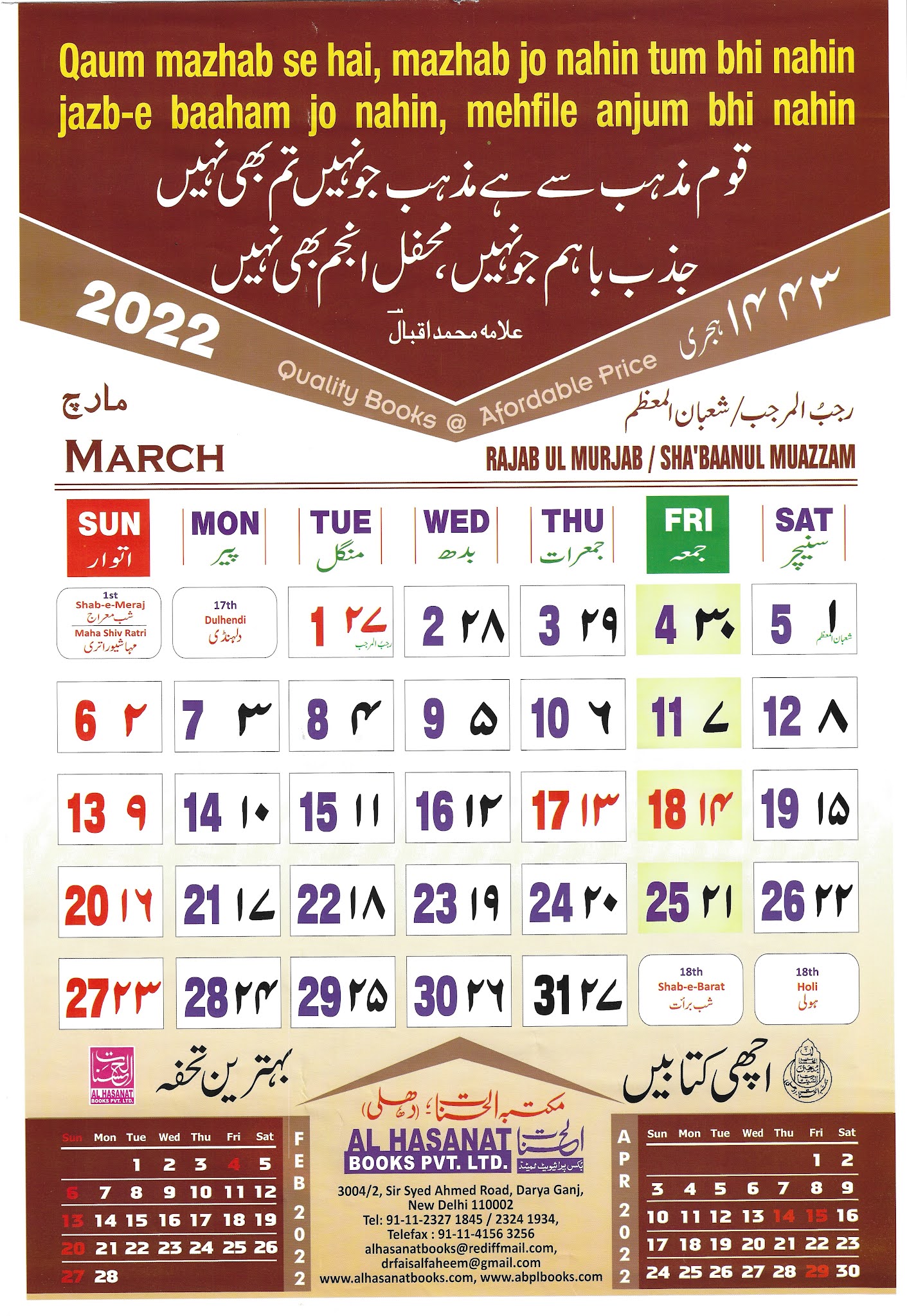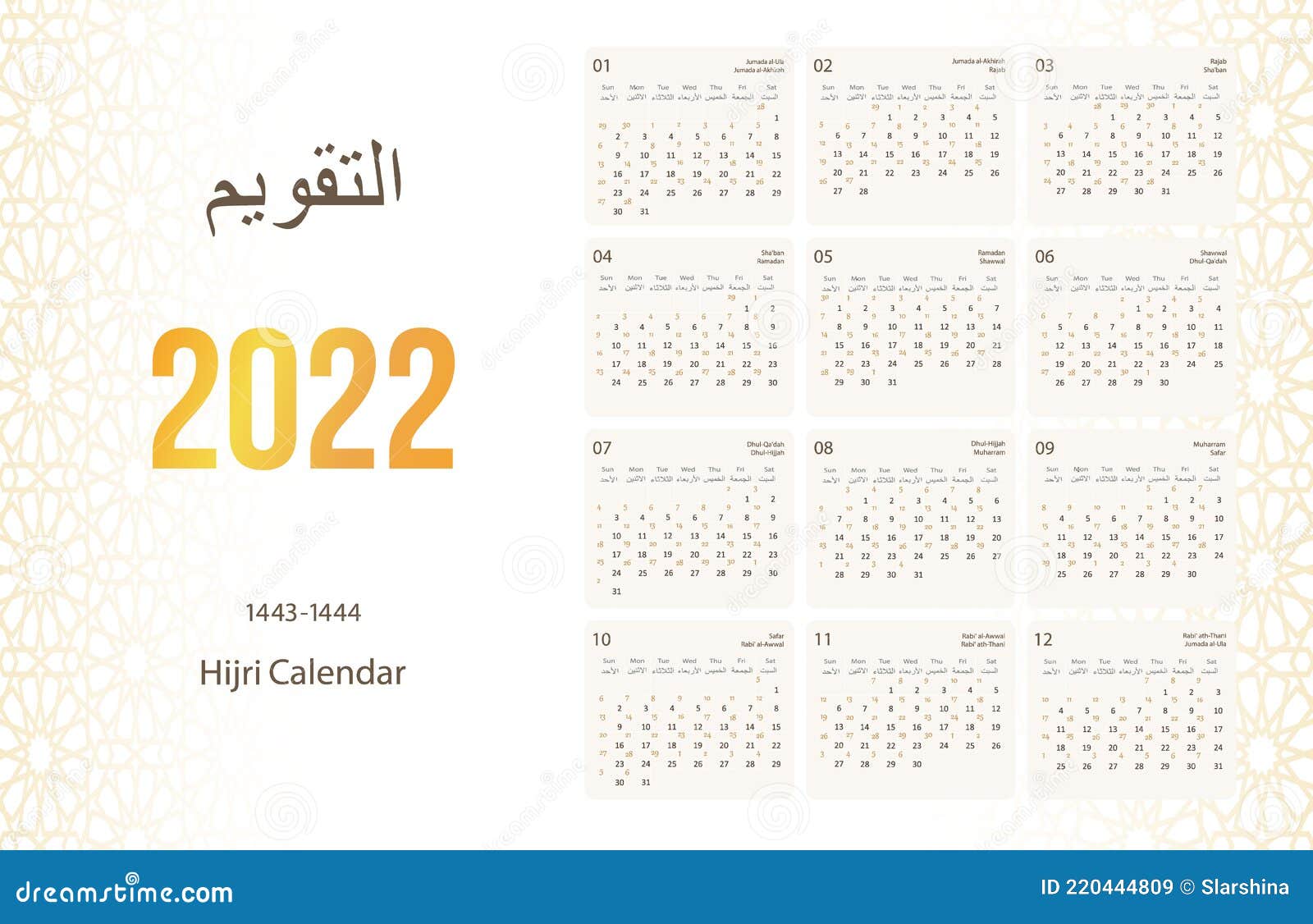


Muslims gather at a mosque to pray at noon on the gathering day, which corresponds with Thursday evening when the sun has completely set. In the Muslim calendar, a week consists of seven days and each day starts at sunset. Following are the names of the months in the Islamic calendar: Each month consists of 29 to 30 days, with the exception of the month of Dhu al-Hijjah. In this calendar, the number of days in each month varies depending on the moon’s rotation around the earth. Each Hijri month commences at the beginning of the new moon cycle. Months in the Islamic CalendarĪ year consists of 12 months known as Hijri months. So, 622 AD became the Islamic calendar’s first year. Once Khalifa Umar had consulted two of the Prophet’s most revered companions, Ali bin Abi Talib and Uthman ibn Affan, this date was finally agreed upon to mark the starting of the new calendar. In the end, the majority agreed on the date of the Prophet’s migration to Madinah.

These suggestions included the date of birth of Prophet Muhammad (PBUH) and the date of the Prophet’s death. While the debate regarding this issue raged on between Khalifa Umar and his advisors, many suggestions were put on the table regarding the date that should mark the commencement of this new calendar. Abu Musa al-Ash’ari sent a letter requesting Khalifa Umar to establish a consistent way of keeping track of dates. Here is a list of the names of these 10 years, starting from the first year of the Hijra that is 622-23 CE.ĭuring the third or fourth year of the leadership of Khalifa Umar ibn al-Khattab, an official in Iraq (Basrah) named Abu Musa al-Ash’ari filed a complaint underlining the absence of a consistent dating system of the correspondence received by him. Instead of being numbered, the first 10 years of Hijra were named after the prominent events in the life of Prophet Muhammad (PBUH). Before the introduction of the Islamic calendar, Muslims kept track of time by using an array of significant events in Islamic history such as the Prophet’s year of birth. The credit of creating the Islamic or the Muslim calendar is given to Khalifa Umar ibn Al-Khattab, who served as a leading companion to the Prophet Muhammad (PBUH) and became the second Muslim ruler after the Prophet’s death. This means the date of Eid, which marks the beginning of the Islamic month of Shawwal, changes in the Gregorian calendar each year.Įid al-Fitr, which means "festival of breaking the fast," comes after a month of abstaining from food and drink from sunrise to sunset in observance of Ramadan.Source: IslamicFinder The Creation of Islamic Calendar Islam follows a lunar calendar, with the sighting of the crescent moon determining the start and end of each month. In most communities in the United States, Eid begins at sundown on Monday, May 2, and lasts one to three days, depending on cultural tradition. With Ramadan, the holiest month of the Islamic calendar, coming to an end, Muslims around the world are preparing to celebrate the festival of Eid al-Fitr. Ramadan, the holiest month in Islam - the second-largest and fastest-growing religion in the world - comes to an end this weekend


 0 kommentar(er)
0 kommentar(er)
